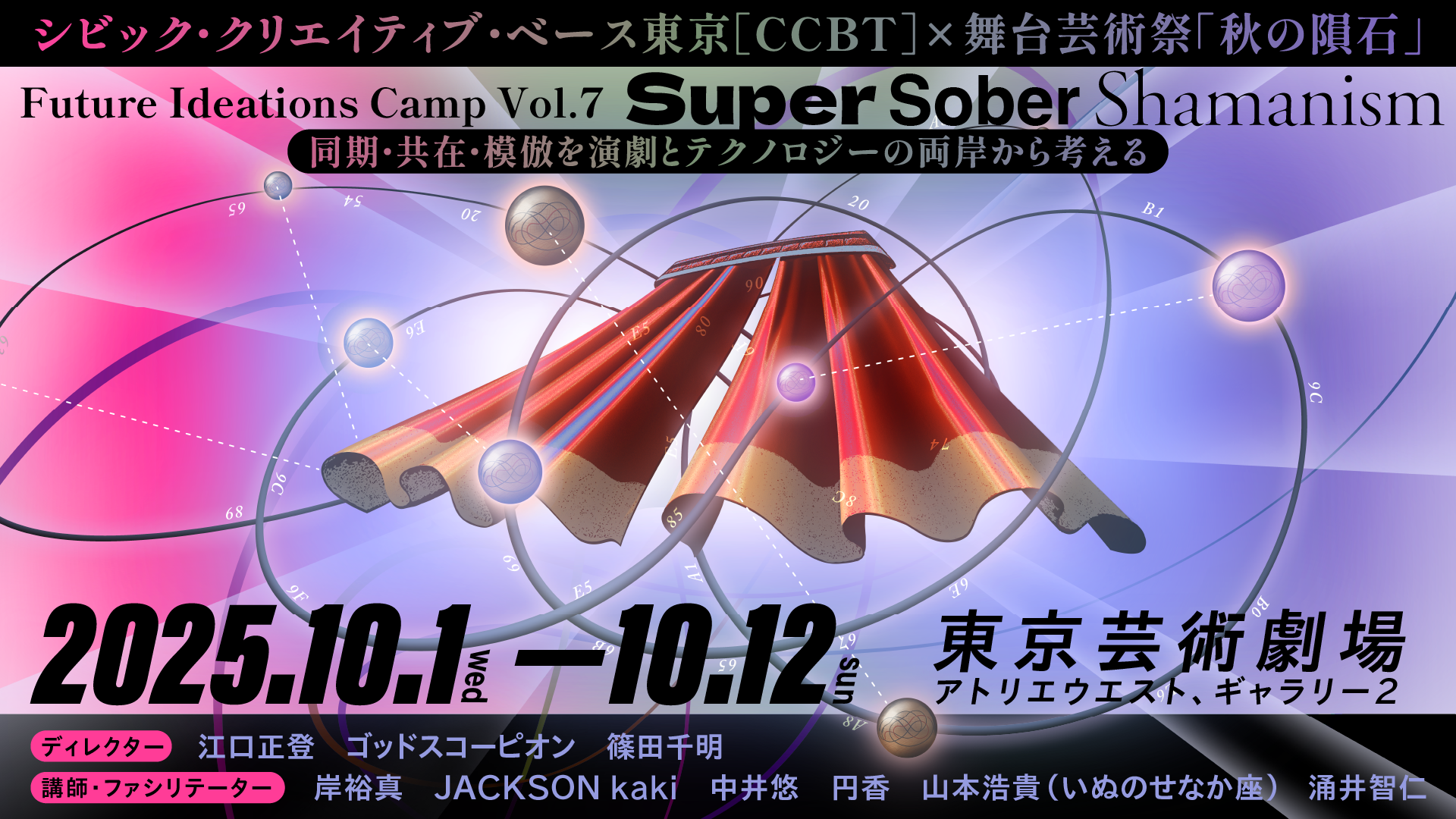
[‘I Like’, ‘It’, ‘to Be’, ‘a Play’, ‘: A Play,’]
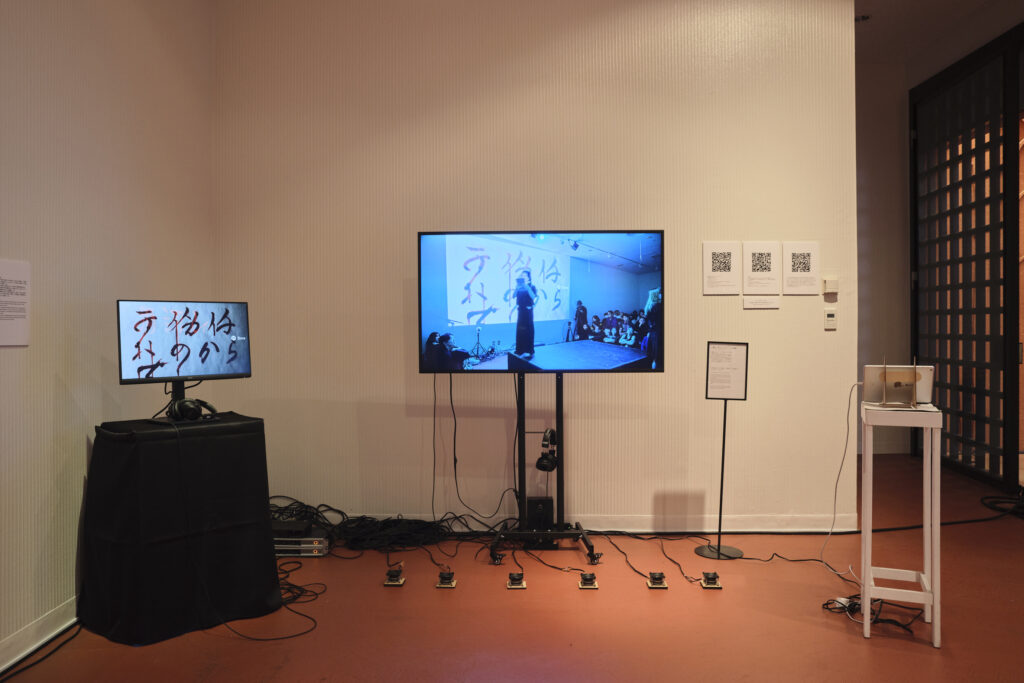
Members:
Huang Jiayin, Luna, Shen Jiayi, Shion Kim
This is a reconfiguration of I Like It to Be a Play by Gertrude Stein.
Drawing on the play’s unique focus on language itself, the test is recomposed, at random, through code in an attempt to liberate it from its own context. By doing so, the reader becomes the “body that is performed.”
At the same time, the play expresses a “dialogue with oneself” by focusing on the internal world that emerges through the process of engaging with the text. This is a retelling of the play, written over 100 years ago, from the perspective of those of us who live in the present.
VR, video, and sound synchronize with the body, making the internal world emerge all the more organically thus blurring the boundary between ourselves and others.
Drunk Theatre
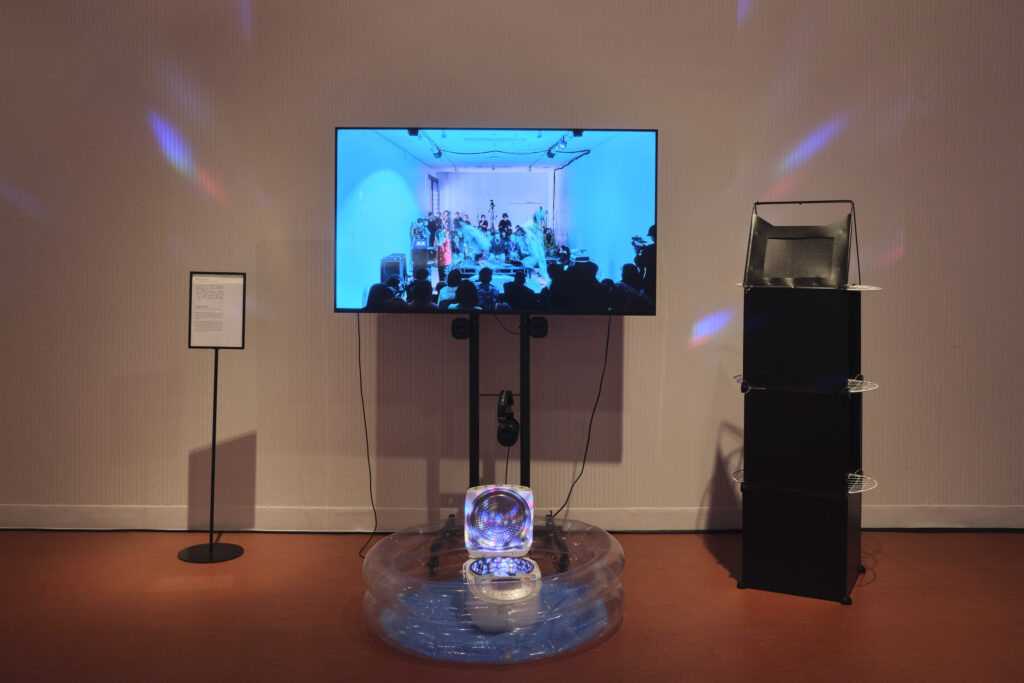
Members:
Hirose Issui, Aritsuka Yui, Kato Nao, Nakahashi Yuri, Miyata Mariko
Technology does not purge the madness inherent in us, nor does it make us sober. Rather, it has transported us into a world of madness utterly different from what was before. A truly sober realm no longer exists; in a sense, we are perpetually in a state of intoxication.
On stage, the performer amplifies their movements toward the machine in a cyclical repetition and continues to spew vomit. This vomit is something that the rational gaze cannot grasp: an unspeakable, restless substance that writhes within us. The theater in which this vomiting continues becomes a space of “situational intoxication,” constructed together by the performer, the audience, and the machine—a space that, paradoxically, rises as a utopia where vomit, as filth, is revered.
Replay
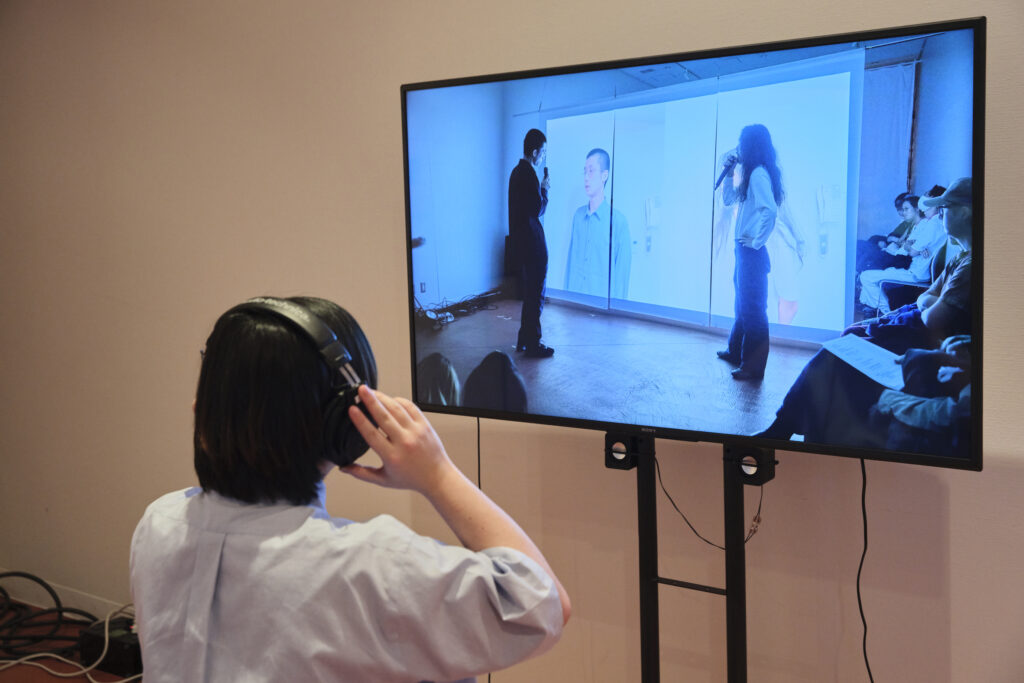
Members:
Fujinaka Koki, Suzuki Shirabe, Ueno Moriji
This performance is based on Gertrude Stein’s 1922 conversational play, I Like It to Be a Play. During the 15-minute runtime, a video of the same content is repeated twice, once in the first half and again in the latter half. The video is composed of recitation audio, impersonations, electronic sound, karaoke subtitles, and an alternate audio track. This enacts “conversations” enfolded with Stein’s original text in English, its multiple translations in Japanese, and the three performers’ off-stage relationship. Or it exposes some pretext required for the staging—for instance, something like this very text. In other words, it is a performance built on such pretexts or excuses, demanding a narrative layered with tension: that is, a performance of deception.
Turf Wars: A Territory Game for the Living
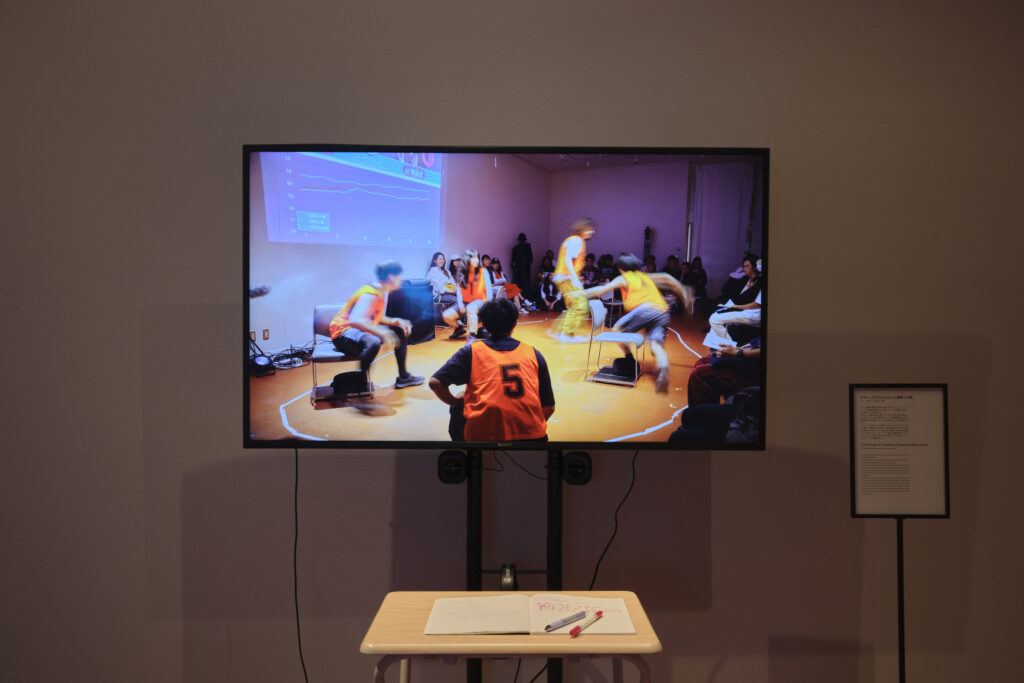
Members:
Ishimaru Megumi, Iwashita Takumi, Yokoyama Go
A silent performance that reimagines the structure of soccer as an improvisational stage.
The invisible pitch emerges as the multiple players’ positions shift fluidly in response to a single player’s split-second decisions.
The performance alternates between two modes: the “sportive” scenes driven by rules and competition, and the “dance-like” scenes shaped by composition and direction. As these modes unfold in sequence, the audience grapples with uncertainty—unsure if each action is scripted or spontaneous.
Meanwhile, the wearable devices capture the performers’ biometric data, which AI then interprets to generate live commentary. The calculations are precise, but the resulting language remains oddly imprecise—often comically so. By tapping directly into the players’ inner states which goes beyond the speculation of traditional commentary, the AI’s narration echoes the cadence of sports broadcasting while infusing it with a subtly grotesque edge.
A Flood, a Scene, or the Nearest Heaven
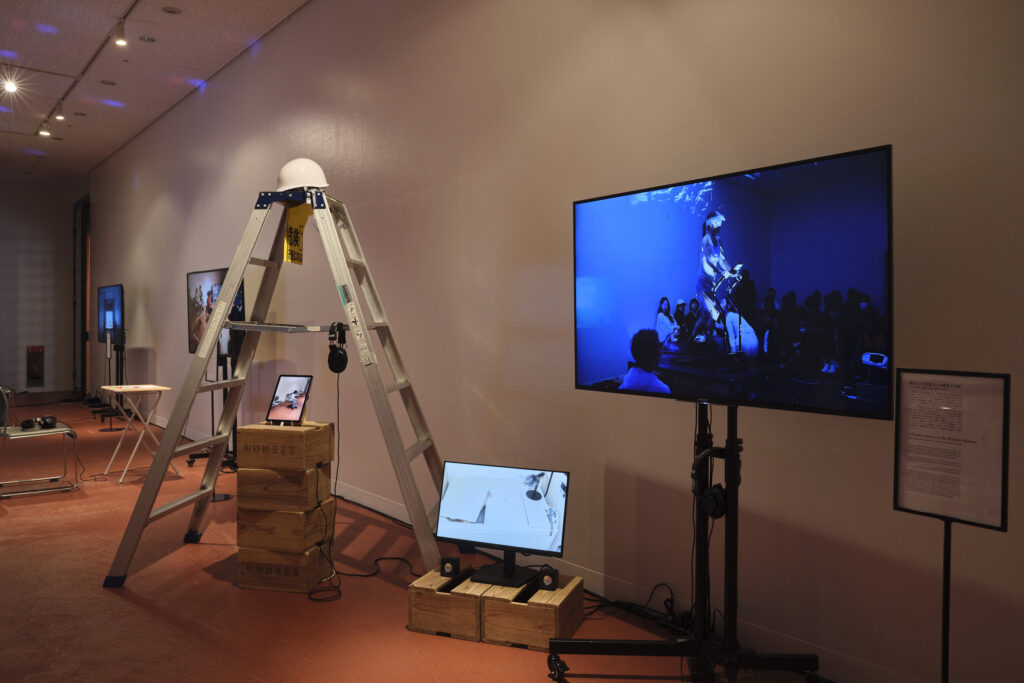
Members:
Kobayashi Ryo, Murata Minori, Uba Nagisa, Uchida Sota, Yagi Kanade
“They’ll go on hoping for the rest of the night. But tomorrow morning, in that terrible dawn, when they see nothing but a sheet of water stretching to the horizon, and the mountains shrunk to nothing, they won’t go back to the caves. They’ll look. They’ll cover their heads against the rain, and they’ll look.”
“You’re confusing them with wild animals. No mortal can know that he’s dying and look directly at death. Men have to run, think, talk. Talk to the survivors.”
Cesare Pavese, Dialoghi con Leucò (1947)
From: https://www.scribd.com/document/605605379/Cesare-Pavese-Dialogues-with-Leuco.
“Dialoghi con Leucò” reminded Uba, one of the members, of an extremely personal vision from the time she nearly drowned in the bathtub. Uba’s body bears a disability, however the body in her vision was without it. From Uba’s perspective, the body “without disabilities” was in virtual form and, on the other hand, Uba’s body seen by a person without disabilities is also virtual. In response to technologies developed by people without disabilities in pursuit of “inconvenience”—such as the HMDs (head mounted displays) that obscure vision in a bid to grasp at “lack”—we traced memories from the play and reenacted the accident in the bathtub.
rental name
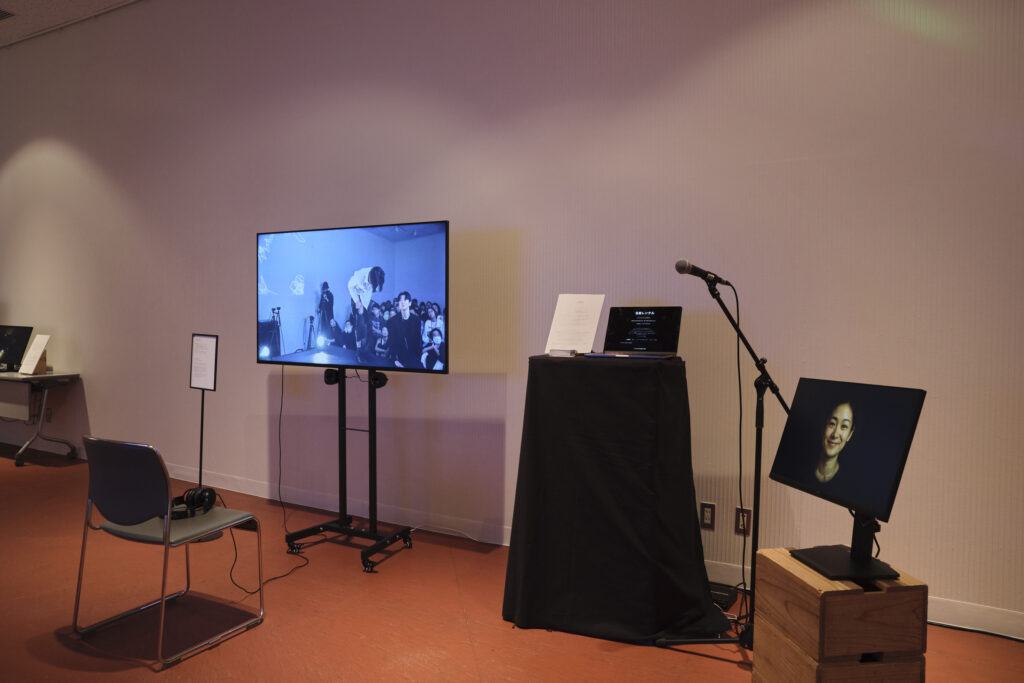
Members:
Chi Yizhou, Endo Yusaku , Nakayama Akihito
By lending my name to others and fictional characters, I loosen and peel away the name that clings so tightly to my very existence.
By nature, the self should possess layers of multiplicity and harbor unknowable depths. However, in modern society, codes specific to each of us—the name registered in the family registry—demand that we maintain a singular, consistent identity and that we unquestioningly belong to society as “human beings,” without ever doubting the existence of the world or ourselves.
This work consists of nothing more than an exceedingly simple fiction: others declaring, “My name is Endo Yusaku.” However, when this name returns to me, what other things have been ingrained onto this particular code?
